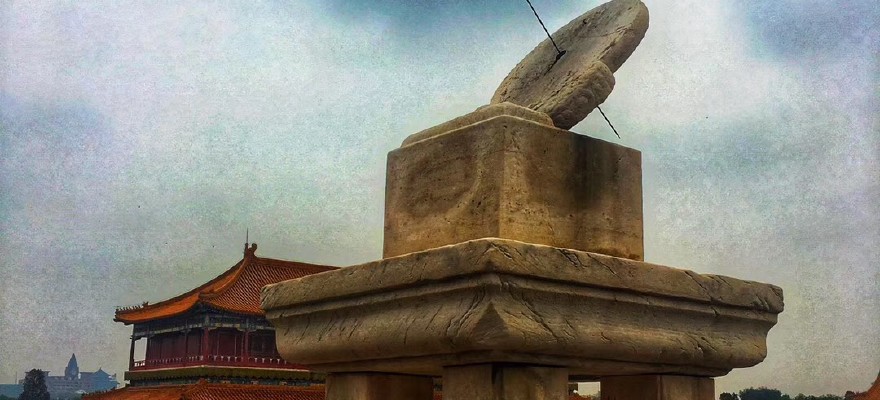7月帶歪果仁玩兒6天北京城(含英文講解)
本來我是不打算寫 北京 的,因為生活在 北京 也沒有特意的集中幾天去玩兒 北京 的景點,一般都是心情不好了逛逛11月的故宮,或者心情特別好,去一次3月的潭柘寺,印象里沒有集中幾天的玩耍。這次趁著去年在會議上幫忙處理了緊急事務而結緣的 瑞士 夫婦來京,也是好好梳理了一下 北京 的幾個景點,或者說是歪果仁眼裡最想去的幾個景點。因為在準備他們來京的前期,我花了很多心思找英語講解的書籍,可謂也是煞費苦心了,雖然沒有專業導游那麼詳細,但記錄的都是我喜歡的景點,喜歡的觀點。所以在這裡也梳理一下做個記錄。
6天計劃 6 Days Plan:Day 1 天安門 Tiananmen 故宮 Forbidden City 梅蘭芳大劇院 Chinese Opera
Day 2 國家博物館 National Museum of China
Day 3 金山 嶺長城 Jinshanling Great Wall
Day 4 古北水鎮 W-Town
Day 5 中國 美術館 The National Art Museum of China
Day 6 雍和宮 Yonghe Temple 中國 中醫葯大學博物館 Beijing University of Chinese Medicine Museum
Day 1:天安門;故宮;京劇因為限號,打車到了天安門東,從天安門東邊過安檢通過天安門走進故宮。
因為是第一個景點,所以關於天安門的英文介紹,我背的特別熟,以前多次游覽天安門,多次路過天安門,倒是從來沒有研究過,拖了這次游玩的福。
TIan’anmen Square is located in the center of Beijing. It was the main gate of he Imperial City during the Ming and Qing dynastics. Tian'anmen Square used to be a closed "T" shape square. 1949, October 1st, Chairman Mao proclaimed the founding of the People's Republic of China and raised the first 5-star red flag.
天安門位於 北京 正中心,這裡在明清兩代曾經是皇城的大門。天安門曾是T字形廣場。1949年10月1日,毛主席在此宣佈了中華人民 共和 國的成立並升起了第一個五星紅旗。
Tian'anmen or the gate of Heavenly Peace is a symbol of new China. During the early Ming Dynasty, the gate was burned down in 1457 and rebuilt in 1465. At the end of the Ming Dynasty in 1644, it was seriously damaged again in a war. Rebuilt second time in 1651.
天安門作為一個承天恩得平安的寓意早已經是新 中國 的象徵了,在明朝初期,天安門曾經在1457年被燒毀,於1465年重建。在明朝後期1644年,又一次因為戰爭而受到嚴重破壞。1651年第二次重建。
The nine-room-wide and five-room-long gate tower was made to show the highest status of the emperor. In the old time, the number "9" was a symbol of the power of the emperor. So the number of 9 was widely used in Tian'anmen gate. For example, the tower is 9-room wide; nine animal figures stand on each corner of the roof; the number of windows and doors are multiples of nine; and each door has 81 knobs.
九個房間的寬度和5個房間的長度的顯示了皇權的威嚴。在古代,數字9代表了皇權。所以這個數字被廣泛的應用在天安門的建造中。例如,天安門9個房間的寬度,在房頂的每個角落有9個神獸;窗戶和門的個數都是9的倍數;每個大門上有81顆金豆豆。
During the Ming and Qing dynasties, the emperors, ministers, and soldiers would go through the gate to worship at the Temple of Heaven, the Temple of Earth, and the Temple of God of Agriculture or go to the war.
明清時期,皇帝、大臣、士兵都要通過天安門到天壇、地壇、農神廟去朝拜,或者是要去打仗。
The River in front of Tian'anmen is called the Outer Golden River. There are 7 stone bridges span over the Golden River, known as the Outer Golden Water River Brideges. According to the historical records, the stone bridges have different names. During the Ming and Qing dynasties the middle one was for the emperors only, so it was called Bridge of Imperial Way. The two bridges on tach side of the middle one were used by the royal family members, thus were called Royal Bridges. The two Bridges farther out were called Ranking Bridges for the civil and military officials above the 3rd rank. the outmost two bridges were called Public Bridges which were used for the 4th rank and the lower officials.
天安門前的那條河叫外金河。金河上有7座石橋,素有“外金水河”之稱。根據史料記載,石橋有不同的名字。在明清時期,中間的這座橋僅供皇帝使用,因此被稱為“御路橋”。中間橋外側的兩座橋是皇室成員使用的,因此被稱為“皇家橋”。更遠處的兩座橋梁被稱為三級以上的軍政官員的“品級橋”。最外面的兩座橋被稱為“公生橋”,用於第四等級和下級官員。
The two pairs of stone lions by the Gate of Tian'anmen served as guardians in the old days. They were sculptured during the Ming Dynasty. The stone lion on the east playing with a ball is a male lion while the other one is a female lion which is playing with a cub. In the old times, lions were thought to be good doorkeepers and so were placed at the gate to ward off evil spirts.
天安門門旁的兩對石 獅子 ,在舊時是守護神。它們是明朝時期雕刻的。東邊的 石獅 是一隻雄性 獅子 ,另一隻是一隻雌性 獅子 ,正在和一隻幼獅玩耍。在古時候,人們認為 獅子 是很好的看門人,所以人們把它放在門口來防止邪惡的幽靈。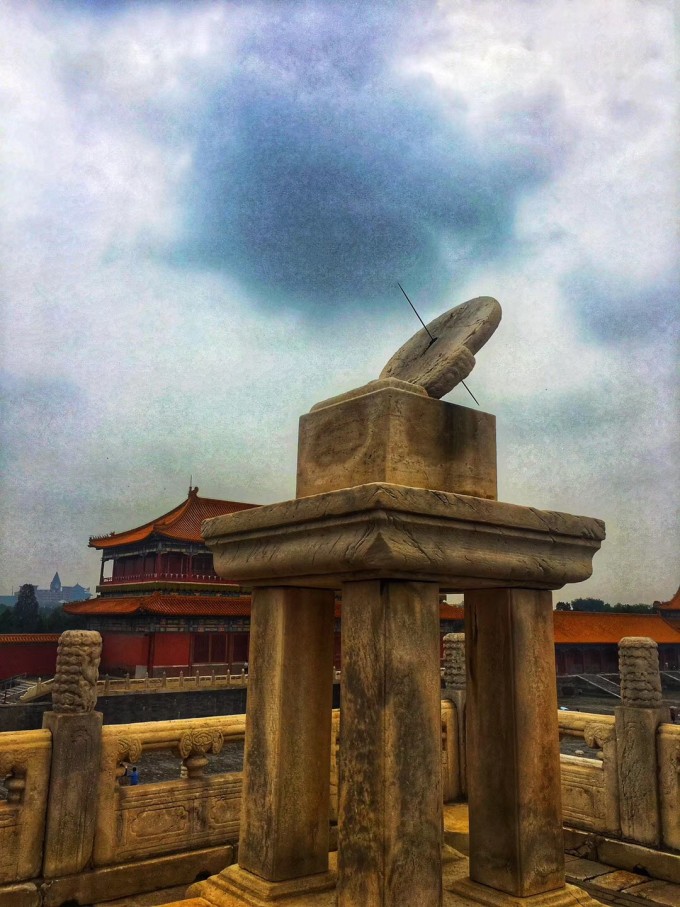 ↑故宮 故宮:提前幾天從官網訂了票,即使是歪果仁的護照也是不用去取票的,直接帶證件進入。游覽路線圖,是從故宮官網上下載的,一日游計劃,還有半日游計劃可以選擇。
↑故宮 故宮:提前幾天從官網訂了票,即使是歪果仁的護照也是不用去取票的,直接帶證件進入。游覽路線圖,是從故宮官網上下載的,一日游計劃,還有半日游計劃可以選擇。 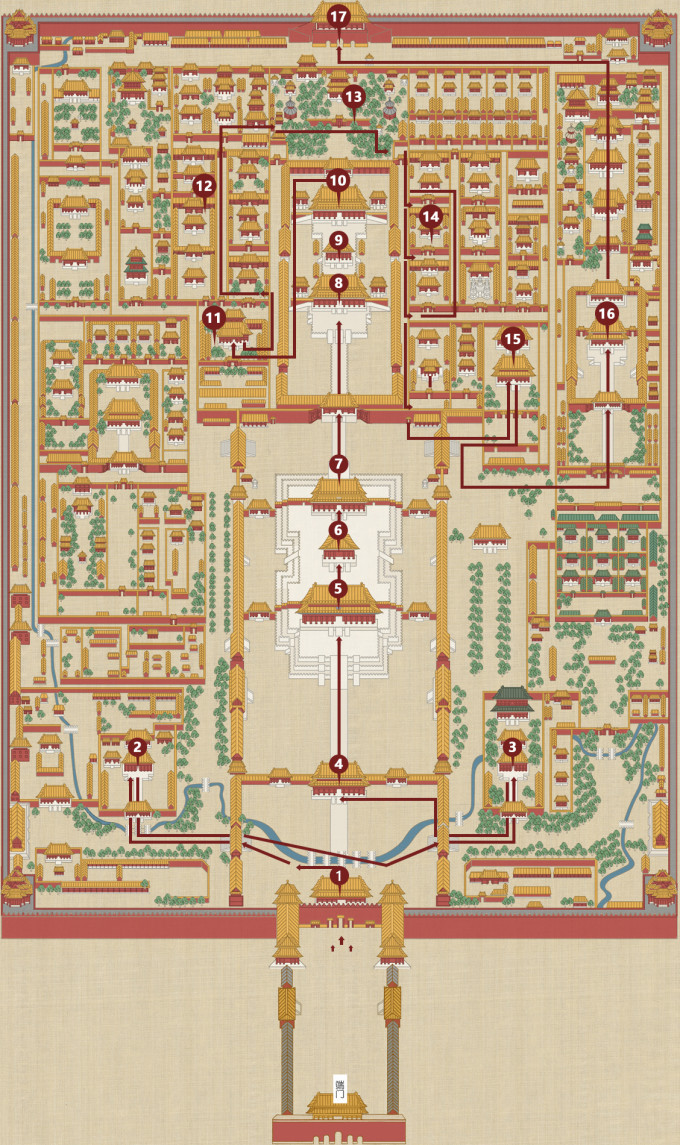 ↑故宮 The Palace Museum, also known as the Forbidden City, is located in the center of Beijing. There are 24 emperors who lived here for a total of 491 years. 14 of them were Ming emperors and 10 were Qing emperors. The construction of the Forbidden City was started in 1406 and finished in 1420 during the Ming Dynasty.
↑故宮 The Palace Museum, also known as the Forbidden City, is located in the center of Beijing. There are 24 emperors who lived here for a total of 491 years. 14 of them were Ming emperors and 10 were Qing emperors. The construction of the Forbidden City was started in 1406 and finished in 1420 during the Ming Dynasty.
故宮又稱紫禁城,位於 北京 的中心。有24位皇帝在這裡生活了491年。其中14位是明朝皇帝,10位是清朝皇帝。紫禁城的建造開始於1406年,完成於1420年的明朝。
Along the central axis there are mainly 6 buildings, the Meridian Gate, the Gate of Supreme Harmony, the Hall of Supreme Harmony, the Hall of Middle Harmony, the Hall of Preserving Harmony, the big stone ramp carved with cloud and dragon designs, the Gate of Heavenly Purity, the palace of Heavenly Purity, the Palace of Union and Peace, the Palace of Earthly Tranqulity, the Imperial Garden and Shenwu Gate.
沿中心軸主要有6建築等。午門、 太和 殿、中和殿、保和殿、 雲龍 石雕、乾清宮、交泰殿、坤寧宮和御花園,和神武門。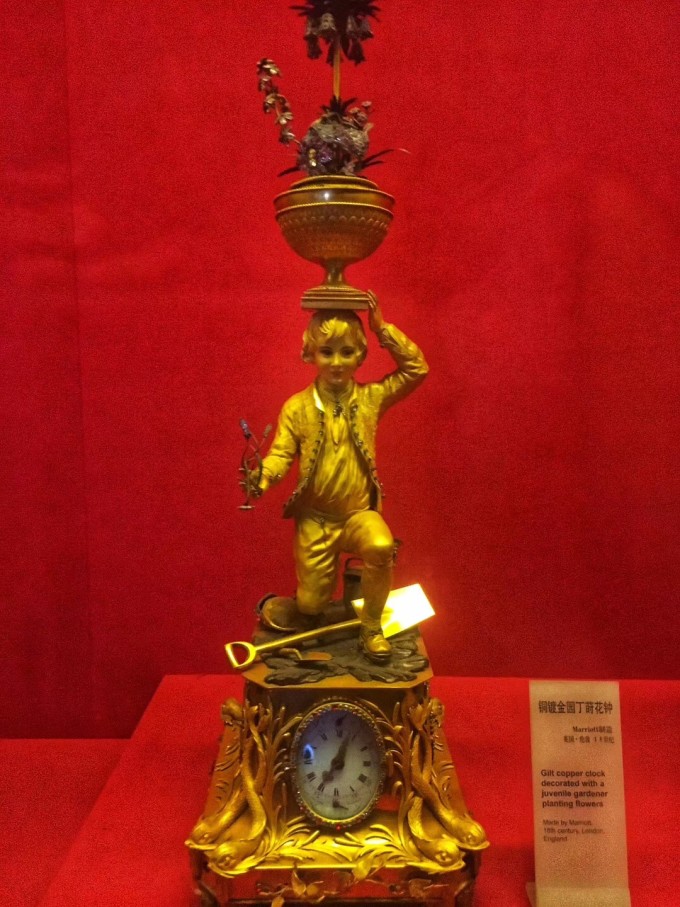 ↑故宮 During the Ming and Qing dynasties, the Meridian Gate was the place where the ceremony of announcing the newlunar year calendar and the ceremony of "accepting captives of war" took place.
↑故宮 During the Ming and Qing dynasties, the Meridian Gate was the place where the ceremony of announcing the newlunar year calendar and the ceremony of "accepting captives of war" took place.
在明清時期,午門是宣佈農曆新年和“接受戰俘”儀式舉行的地方。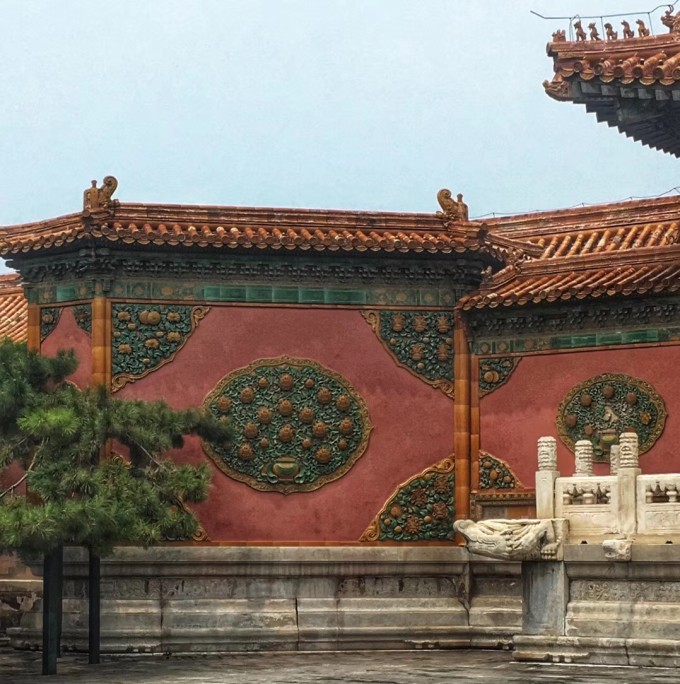 ↑故宮 The Palace of Heavenly Purity. This the largest building of the 3 rear palaces. It was first built in 1420, and the present one was rebuilt in 1797. During the Ming and early Qing dynastics, it was the residence for the emperors to lice and handle the daily affairs. But after the third Qing Emperor Yongzheng, this building was used as an audience chamber because he moved his living quarters to the Hall of Mental Cultivation.
↑故宮 The Palace of Heavenly Purity. This the largest building of the 3 rear palaces. It was first built in 1420, and the present one was rebuilt in 1797. During the Ming and early Qing dynastics, it was the residence for the emperors to lice and handle the daily affairs. But after the third Qing Emperor Yongzheng, this building was used as an audience chamber because he moved his living quarters to the Hall of Mental Cultivation.
乾清宮。這是後宮三座最大的建築。它始建於1420年,現在的在1797年重建。在明清初期,它是皇帝虱子和處理日常事務的居所。但在清代第三代雍正皇帝之後,由於他把自己的住處搬到了養心殿,這座建築就被用作了一個“聽眾席”。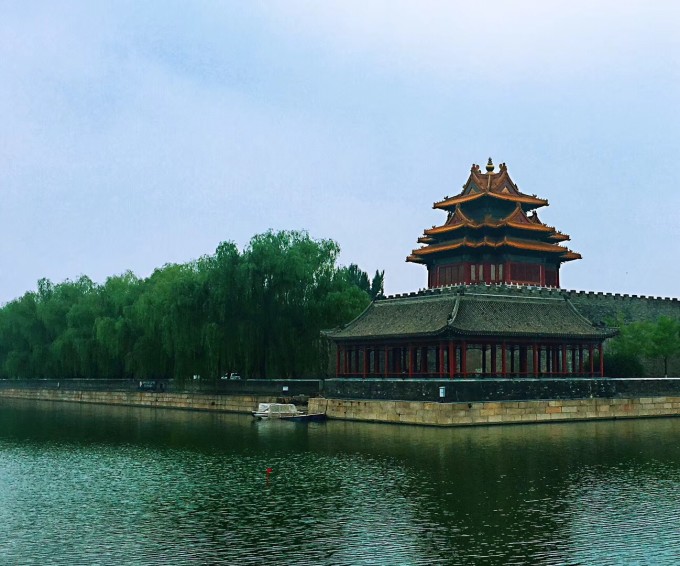 ↑角樓
↑角樓 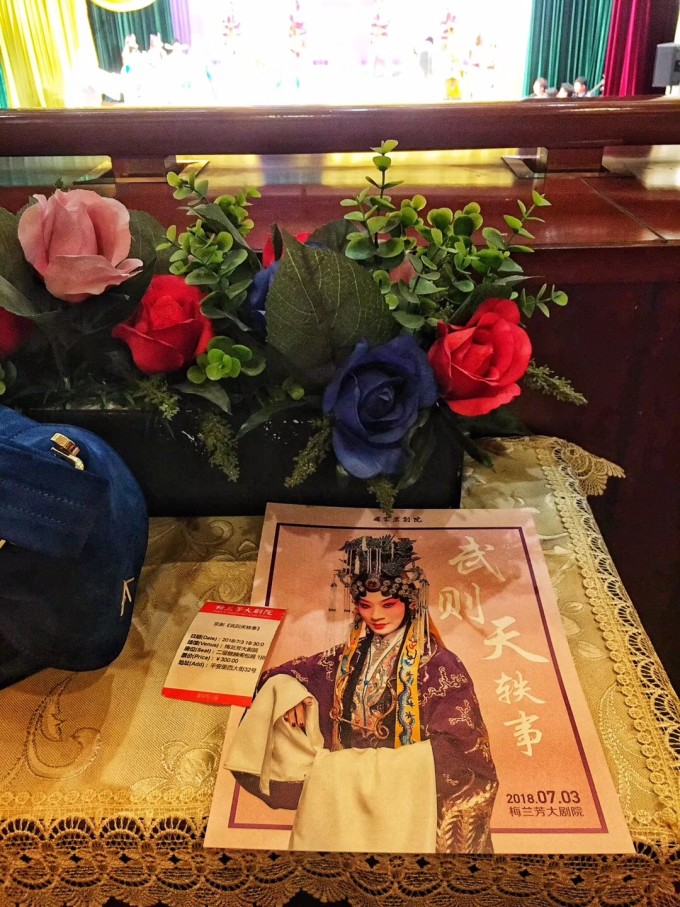 ↑梅蘭芳大劇院 梅蘭芳大劇院地址 北京 市西城區平安里西大街32號。幾乎每天都會有劇目上映。我們訂的是7月三日的武則天軼事,做的二樓貴賓座。價格適中。劇目改編過了,是年輕人可以多少接受一些的。而且配色和服裝妝容也很美了,比之以前的京劇看起來豐滿很多了。
↑梅蘭芳大劇院 梅蘭芳大劇院地址 北京 市西城區平安里西大街32號。幾乎每天都會有劇目上映。我們訂的是7月三日的武則天軼事,做的二樓貴賓座。價格適中。劇目改編過了,是年輕人可以多少接受一些的。而且配色和服裝妝容也很美了,比之以前的京劇看起來豐滿很多了。
Wu Zetian was born of a royal lineage during the Tang Dynasty. She entered Emperor Taizong's harem when she was 13 and that of the successive emperor Gaozong after. A master of manipulation, Wu Zetian persuaded the emperor to declare her one rank below the empress consort. Eventually, the Emperor married Wu. When Gaozong suffered a stroke five years later, Wu governed behind the scenes. She created a secret police force to spy on her opposition, jailing or killing those who stood in her way.
武則天出生於唐朝的一個皇室家族。13歲時,她進入了唐太宗的後宮,之後又進入了高宗的後宮。武則天是一個善於操縱的人,他說服皇帝宣佈她的地位低於皇后。最後,皇帝娶了吳。五年後,高宗中風,武則天在幕後指揮。她建立了一支秘密警察部隊來監視她的反對派,關押或殺害那些阻擋她的人。
After Gaozong's death she reigned through puppet emperors, her sons Zhongzong and Ruizong. She finally proclaimed herself Emperor, the first woman to do so. Wu ruled until her 80s when she was unable to thwart a coup. She died shortly after. Despite her ruthless climb to power, her rule was benign. Wu reduced the size of the standing army, and replaced aristocrats in the government with scholars. She was fair to the peasantry, lowering taxes, raising agricultural production, and strengthening public works. Wu also campaigned to elevate the status of women and had scholars write biographies of famous women.
高宗死後,她通過傀儡皇帝、兒子宗宗和瑞宗統治。她終於宣佈自己為皇帝,這是第一位這樣做的女性。一直統治到80年代,當時她無法阻止政變。她死後不久。儘管她無情地攀爬權力,但她的統治是溫和的。武則天縮小了常備軍的規模,用文人取代了官府中的貴族。她對農民公平,降低稅收,提高農業生產,加強公共工程。武則天還致力於提升女性的地位,並讓學者為著名女性撰寫傳記。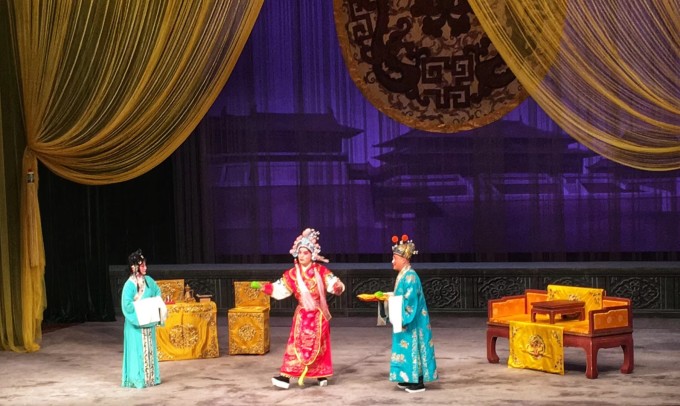 ↑梅蘭芳大劇院
↑梅蘭芳大劇院 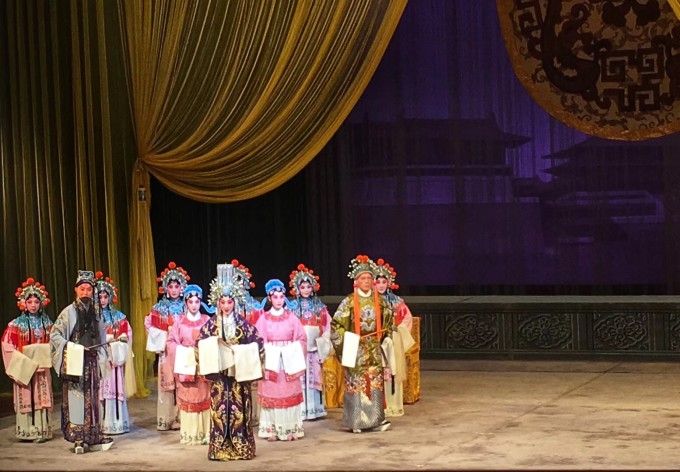 ↑梅蘭芳大劇院 Day 2 國家博物館中國 國家博物館是中華文化的祠堂和祖廟,是集中反映中華優秀傳統文化、革命文化和社會主義先進文化的國家最高歷史文化藝術殿堂。這裡收藏的140萬餘件藏品,充分展現和見證了中華5000年文明的血脈綿延與燦爛輝煌。
↑梅蘭芳大劇院 Day 2 國家博物館中國 國家博物館是中華文化的祠堂和祖廟,是集中反映中華優秀傳統文化、革命文化和社會主義先進文化的國家最高歷史文化藝術殿堂。這裡收藏的140萬餘件藏品,充分展現和見證了中華5000年文明的血脈綿延與燦爛輝煌。
中國 國家博物館的前身可追溯至1912年成立的國立歷史博物館籌備處,至今已走過一百多年的光輝歷程,積澱了深厚的歷史文化底蘊,在文物收藏保護、陳列展覽、社會教育、科學研究、對外歷史文化交流方面發揮著重要的平臺作用,2003年 中國 歷史博物館和 中國 革命博物館合併組建成為 中國 國家博物館。近20萬平方米的建築面積,使它成為世界上單體建築面積最大的博物館;48個展廳展出的“古代 中國 ”和“復興之路”兩個基本陳列以及青銅器、佛造像、錢幣、瓷器、石刻、革命文物、現當代美術作品等十多個專題展覽,使它成為能夠全面系統完整展現中華優秀傳統文化、革命文化和社會主義先進文化的綜合性博物館;配合每年50餘個高水平國際交流展和臨時展覽, 中國 國家博物館每年吸引著近千萬國內外觀眾前來參觀,使它成為世界上最受歡迎的博物館之一。
As the ancestral temple and ancestral temple of Chinese culture, the national museum of China is the highest national historic cultural and art palace that focuses on the outstanding traditional Chinese culture, revolutionary culture and advanced socialist culture. The collection of over 1.4 million pieces here has fully demonstrated and witnessed China's 5000-year civilization.
The national museum of China was established in 1912, the predecessor can be traced back to the national museum of history of Taiwan, has passed one hundred years of glorious history, the deep accumulation of historical culture, the protection of cultural relics collection, display and social education, scientific research, foreign historical and cultural exchanges play an important role in the platform, in 2003, the museum of Chinese history and the museum of Chinese revolution formed as the national museum of China. The building area of nearly 200,000 square meters makes it the largest single building area in the world. 48 exhibition of "ancient Chinese" and "renewal" are two basic display and bronze ware, Buddha statues, COINS, porcelain, stone carving, revolutionary cultural relics, modern and contemporary art works, such as more than a dozen special exhibition, making it able to complete system show complete Chinese excellent traditional culture, the revolutionary culture and socialist advanced culture comprehensive museum; With more than 50 high-level international exhibitions and temporary exhibitions every year, the national museum of China attracts thousands of visitors from home and abroad every year, making it one of the most popular museums in the world。-----------摘自國博官網 ↑中國國家博物館
↑中國國家博物館 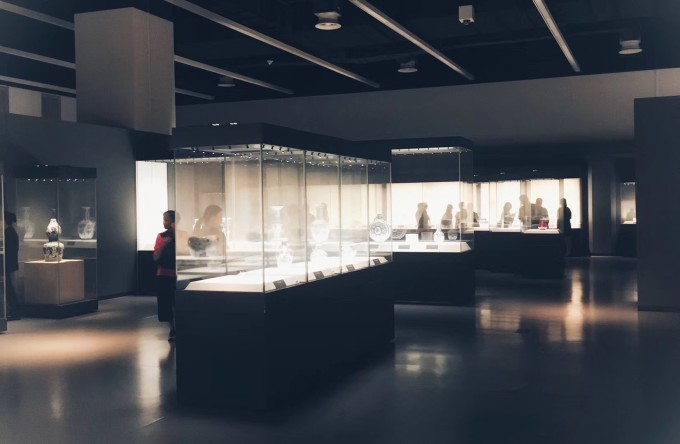 ↑中國國家博物館
↑中國國家博物館 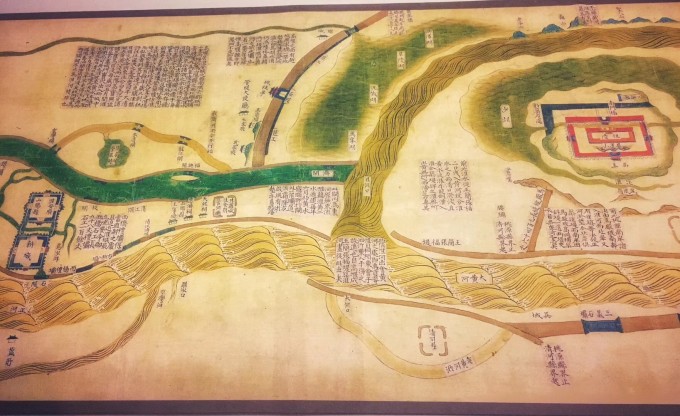 ↑中國國家博物館 去國博最好在官網預約票,這樣可以節省排隊的時間。 Day 3 金山嶺長城
↑中國國家博物館 去國博最好在官網預約票,這樣可以節省排隊的時間。 Day 3 金山嶺長城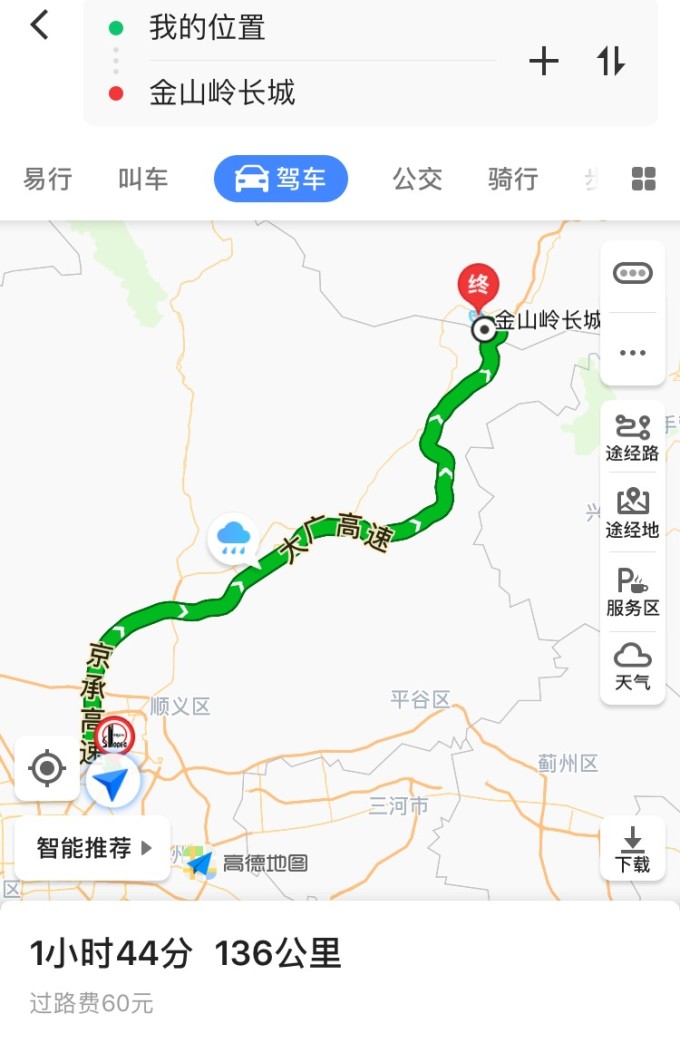 Construction of the early Great Wall first began in the seventh century B.C. In history we call the period the Spring and Autumn Period (770 B.C.-476 b.C.). At that time, there are many kingdoms in China They often fought against each other to enlarge their own territories. During the wars, in order to protect themselves against attack, they built high walls, beacon towers and defense fortresses along their boundary.
Construction of the early Great Wall first began in the seventh century B.C. In history we call the period the Spring and Autumn Period (770 B.C.-476 b.C.). At that time, there are many kingdoms in China They often fought against each other to enlarge their own territories. During the wars, in order to protect themselves against attack, they built high walls, beacon towers and defense fortresses along their boundary.
長城始建於公元前7世紀。在歷史上,我們把這段時期稱為春秋時期(公元前770年)公元前-476年)。當時, 中國 有很多王國,他們經常為了擴大自己的領土而互相爭鬥。在戰爭期間,為了保護自己免受攻擊,他們沿著邊界修建了高牆、烽火臺和防禦堡壘.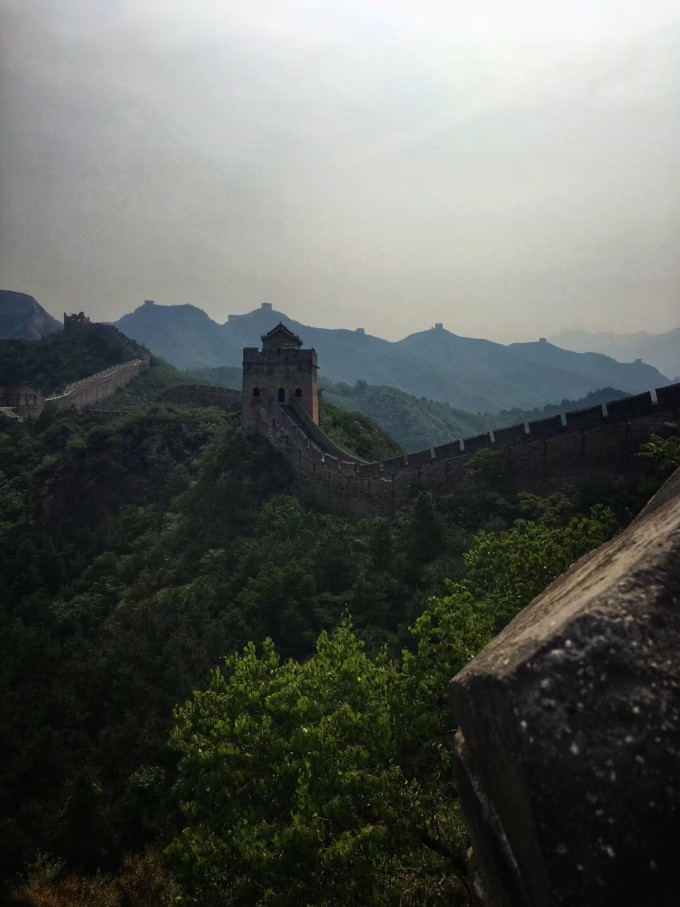 ↑金山嶺長城
↑金山嶺長城 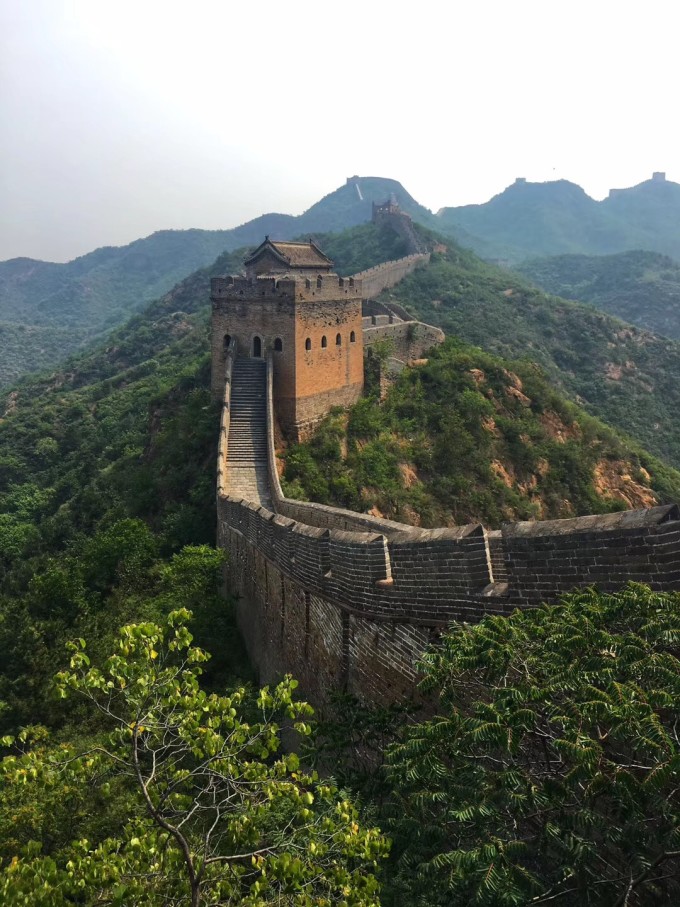 ↑金山嶺長城
↑金山嶺長城 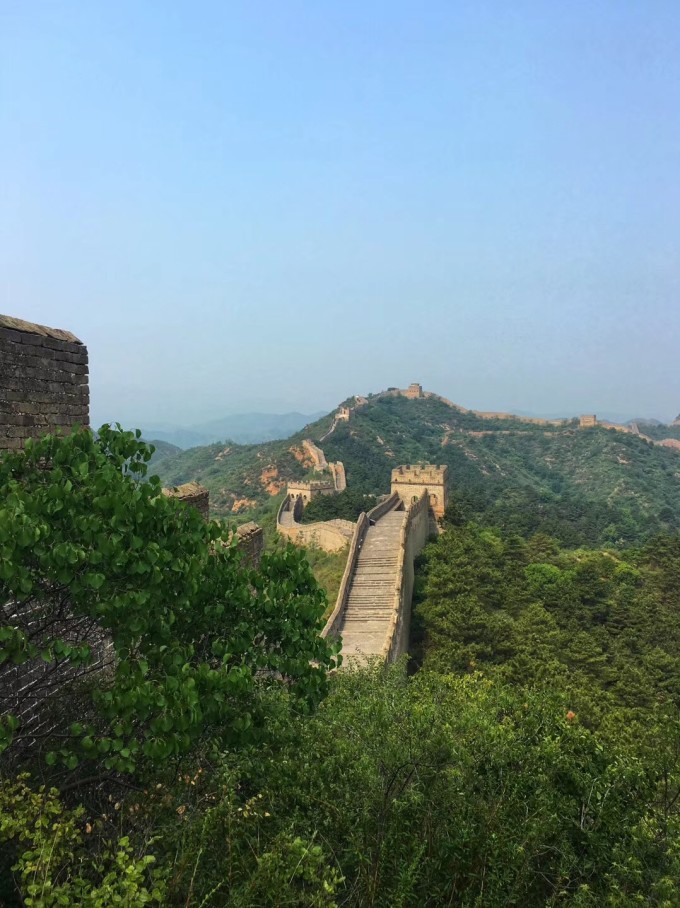 ↑金山嶺長城
↑金山嶺長城  上圖是 金山 嶺景區的咖啡廳,哥哥們嫂子們的店,由二嫂子親制的手作menu還有大嫂子的現磨咖啡沖調的拿鐵,很是解乏。 也成為了去 金山 嶺下山的必經之店。 Day 4 古北水鎮金山 嶺長城到 古北水鎮 車程20分鐘。
上圖是 金山 嶺景區的咖啡廳,哥哥們嫂子們的店,由二嫂子親制的手作menu還有大嫂子的現磨咖啡沖調的拿鐵,很是解乏。 也成為了去 金山 嶺下山的必經之店。 Day 4 古北水鎮金山 嶺長城到 古北水鎮 車程20分鐘。
古北水鎮 位於 北京 市 密雲 區古北口鎮,坐落在司馬台長城腳下。古北口自古以雄險著稱,有著優越的軍事地理位置,《 密雲 縣誌》上描述古北口“京師北控邊塞,順天所屬以松亭、古北口、居庸三關為總要,而古北為尤沖”。古北口以其獨特的軍事文化吸引了無數文人雅士,蘇轍、劉敞、納蘭性德等文詞大家在此留下了許多名文佳句,更有康熙、乾隆皇帝多次贊頌,以“地扼襟喉趨溯漠,天留鎖鑰枕雄關”來稱頌它地勢的險峻與重要。
Wtown is located in gubeikou town, miyun district, Beijing, at the foot of the Great Wall of simatai. Ancient gubeikou is famous for its magnificence and danger since ancient times, and it has a superior military geographical position. Miyun county annals describes gubeikou as "the beijing-controlled frontier fortress controlled by the capital, and the subordinate of shuntian is songting, gubeikou and juyong three pass, while the ancient north is you chong". Gubeikou attracted numerous literati and refined scholars with its unique military culture. Many literary words such as su zhe, liu chang and nalan xingde were left here, and emperors kangxi and qianlong praised it for many times, and praised its precipitous and important terrain with "the ground is dominated by the throat, the desert is followed by the sky.(這英文翻譯的古詩部分嗲不嗲,哈哈哈。。。)
從 金山 嶺開車去 古北水鎮 ,因為提前訂好了在 古北水鎮 裡面的酒店,還特別有景區人員打來電話確認預計抵達時間,並指引我們如何停車,如何從停車場搭電瓶車到景區入住辦理,再我們寄存行李,不到一個小時,行李已經送到我們各自的酒店里了,我住在日式風格的湯泉小旅館段家大院,價格是1060/晚, 朋友住在八旗客棧。我們是游覽完長城在長城停車場對面吃了農家樂之後開車到的3號停車場,抵達辦理好以後,我們搭乘電瓶車到最後一站,步行到酒店。稍作休息後就乘船到了水鎮中心位置,從中心步行到酒店位置旁邊的夜爬長城纜車口。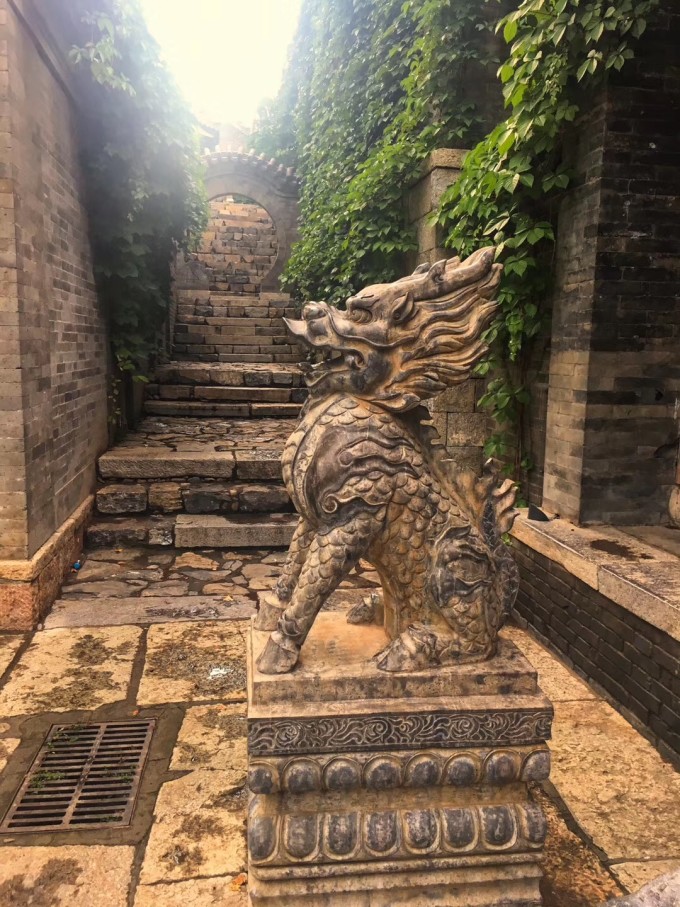 ↑故宮
↑故宮 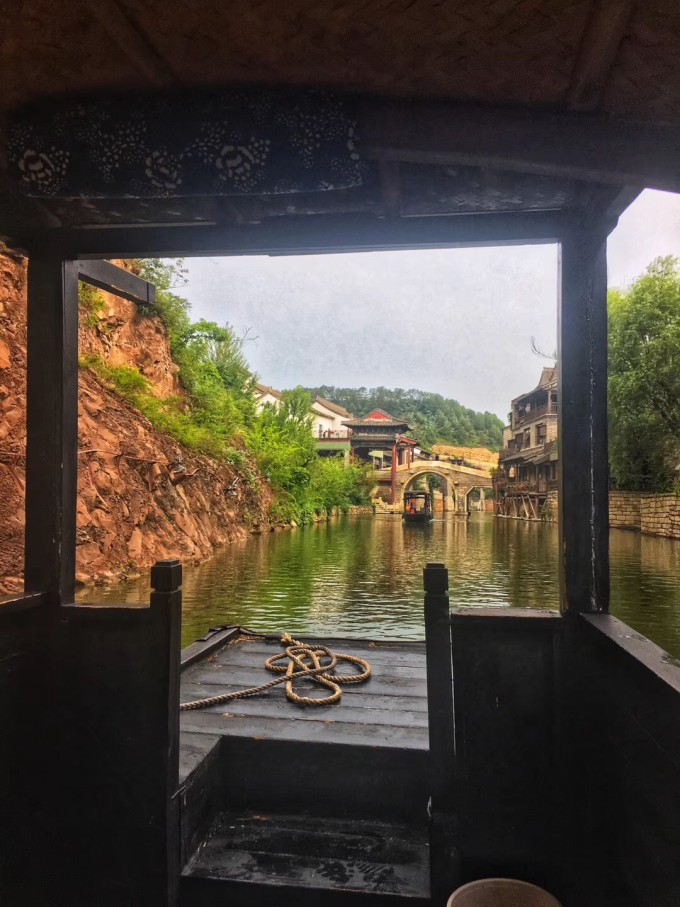 ↑古北水鎮
↑古北水鎮 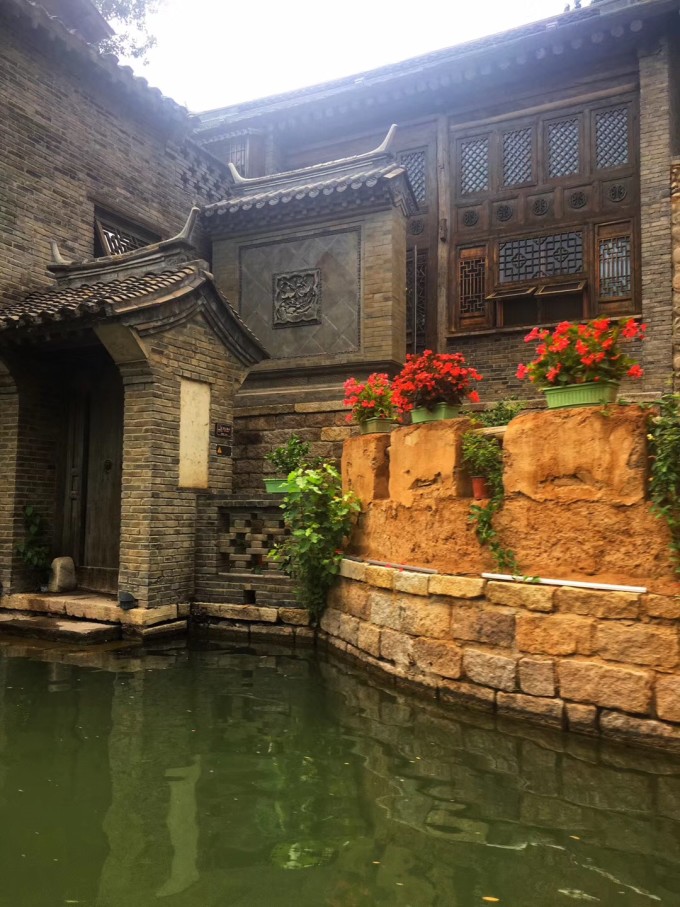 ↑古北水鎮
↑古北水鎮 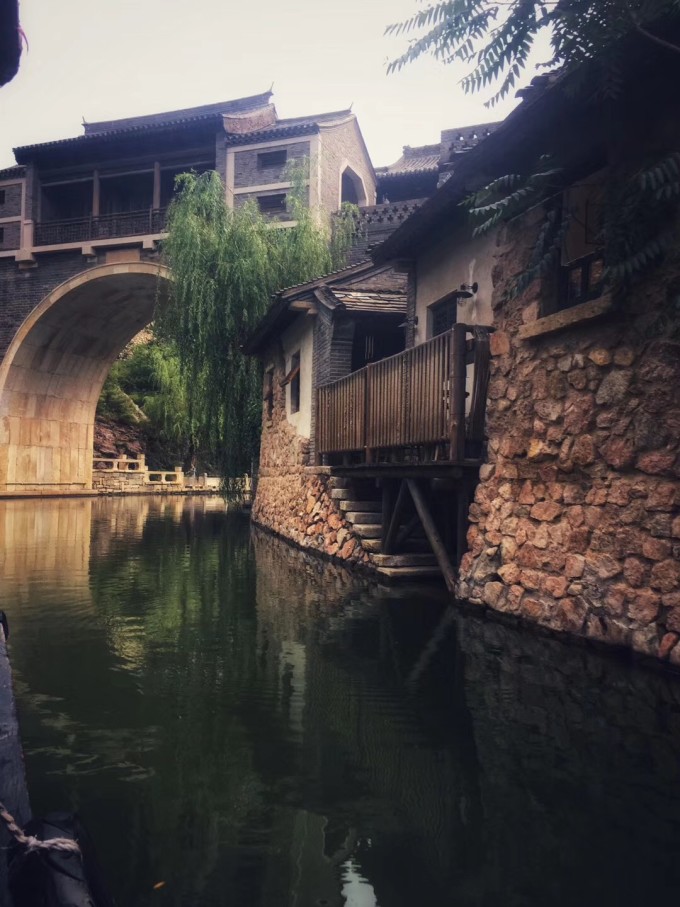 ↑古北水鎮 隆慶二年,明穆宗朱載垕為加強北方軍事防務,特任戚繼光為薊鎮總兵修築司馬台長城。在原有基礎上加築城牆、墩台等禦敵設施,凸顯關隘氣勢。直至1933年古北口戰役,司馬台長城遭到炮火轟擊,斷壁殘垣間愈顯蒼勁。
↑古北水鎮 隆慶二年,明穆宗朱載垕為加強北方軍事防務,特任戚繼光為薊鎮總兵修築司馬台長城。在原有基礎上加築城牆、墩台等禦敵設施,凸顯關隘氣勢。直至1933年古北口戰役,司馬台長城遭到炮火轟擊,斷壁殘垣間愈顯蒼勁。
1987年司馬台長城被列入世界遺產名錄,是我國唯一保留明代原貌的古建築遺址,被聯合國教科文組織確定為“原始長城”。 中國 著名長城專家羅哲文教授評價其為“ 中國 長城是世界之最,而司馬台長城是 中國 長城之最”。 2012年,司馬台長城被 英國 泰晤士 報評為“全球不容錯過的25處風景之首”。
2010年開始,在總裁陳向宏先生的帶領下,一批“古北人”不畏艱難險阻、繼往開來,接過守護長城的重任。在原有長城的基礎上進行保護,引進 法國 波 馬公 司最新技術設計的單線循環脫掛抱索器索道,游客可輕鬆登覽、領略司馬台長城的壯美。
In the second year of longqing, in order to strengthen the northern military defense, muzong zhujiahe appointed qi jiguang to build the Great Wall of simatai for the general of chizhen town. Add to build the wall, pier and other facilities against the enemy on the original basis, highlight the momentum of the pass. Until the battle of gubeikou in 1933, the Great Wall of sima tai came under fire, and the broken walls became more and more vigorous.
In 1987, the simatai Great Wall was listed in the world heritage list. It is the only ancient architectural site in China that retains the original appearance of the Ming dynasty. "The Great Wall of China is the largest in the world, and the Great Wall of sima tai is the largest in China," said professor luo zhewen, a famous expert on the Great Wall of China. In 2012, sima tai wall was named "the top 25 must-see scenic spots in the world" by the British times.
Since 2010, under the leadership of President Chen xianghong, a group of "gubei people" have continued to protect the Great Wall despite difficulties and difficulties. On the basis of the original Great Wall for protection, the introduction of the latest technical design of the French company boma single-line cycle unhanging of the rope hoisting device cable road, visitors can easily access the magnificent view of sima tai Great Wall.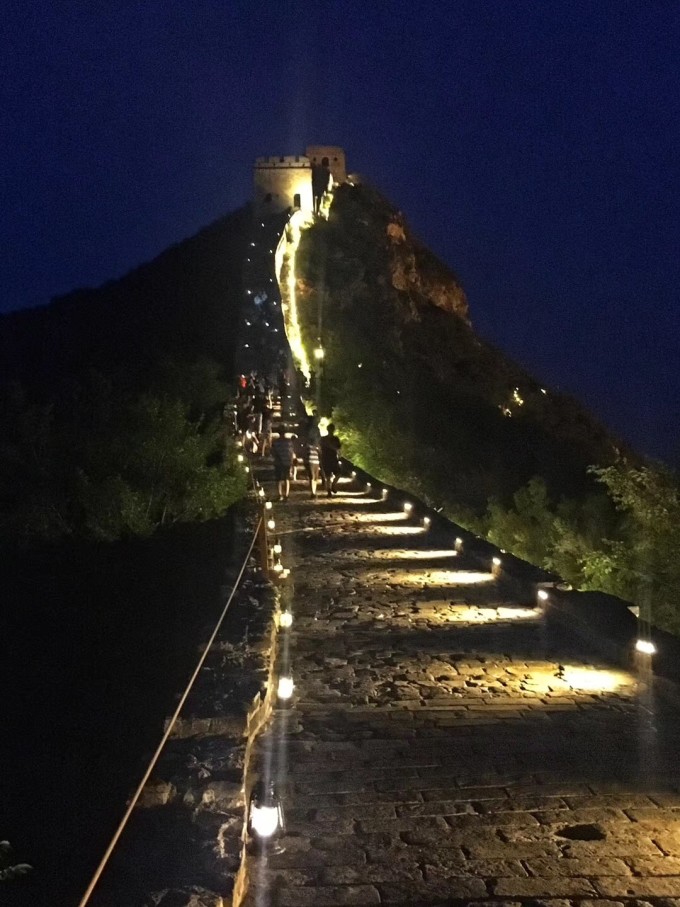 ↑司馬台長城
↑司馬台長城 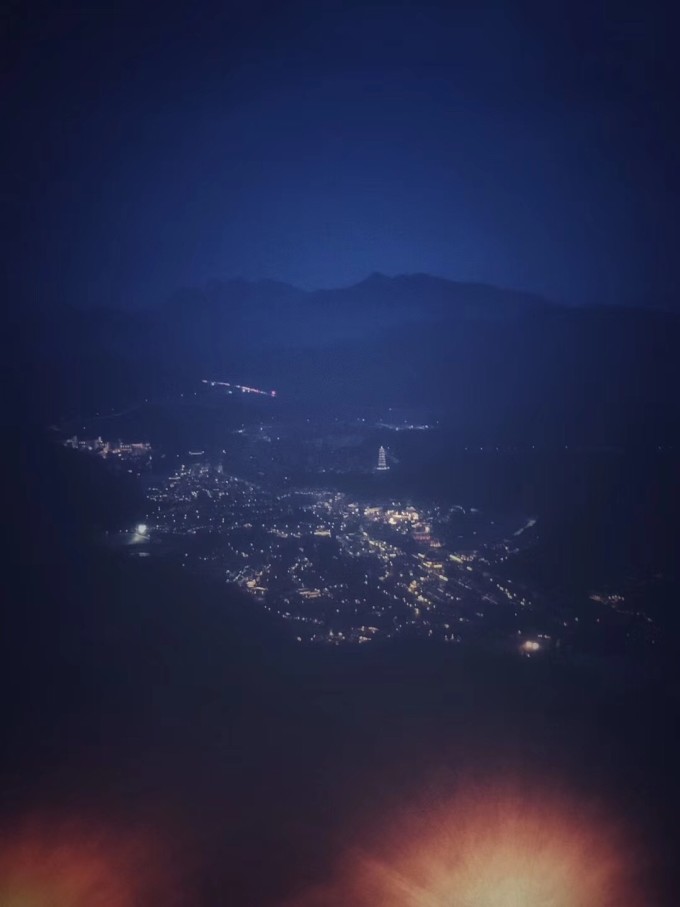 ↑司馬台長城
↑司馬台長城 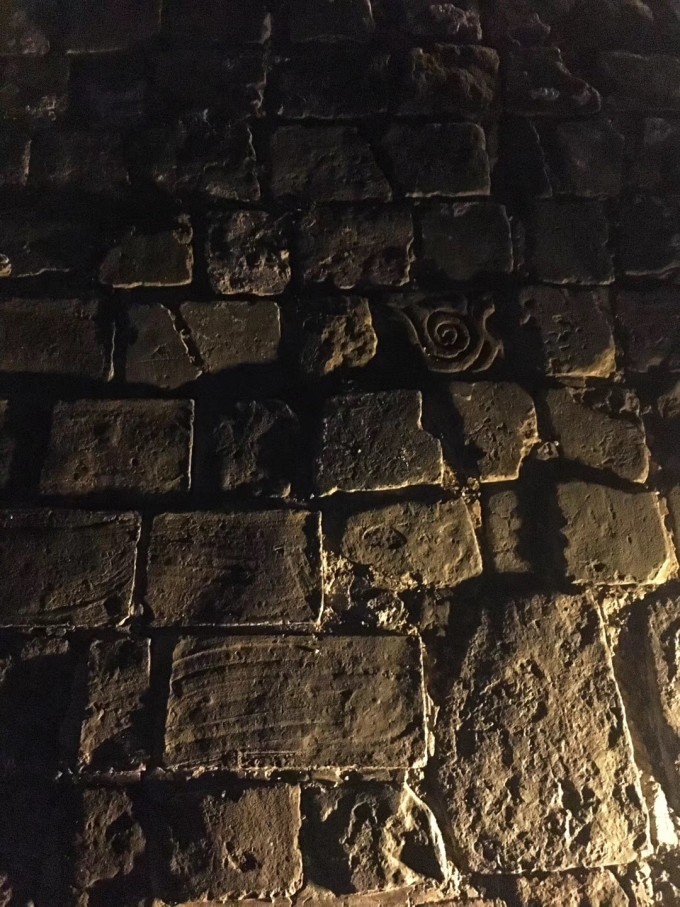 ↑司馬台長城
↑司馬台長城 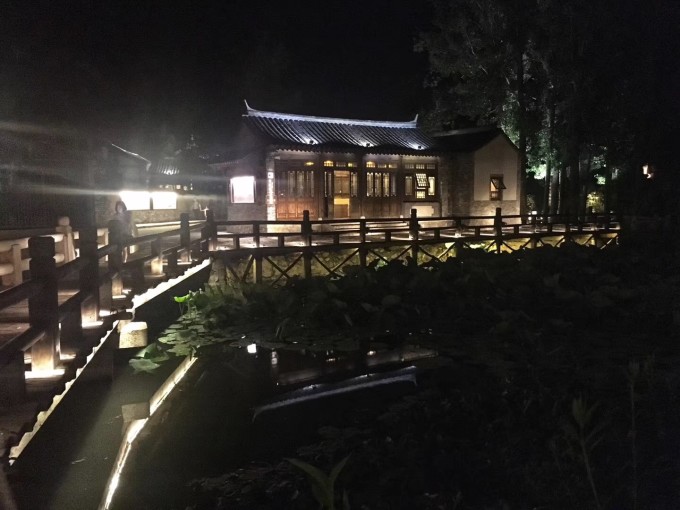 ↑古北水鎮
↑古北水鎮 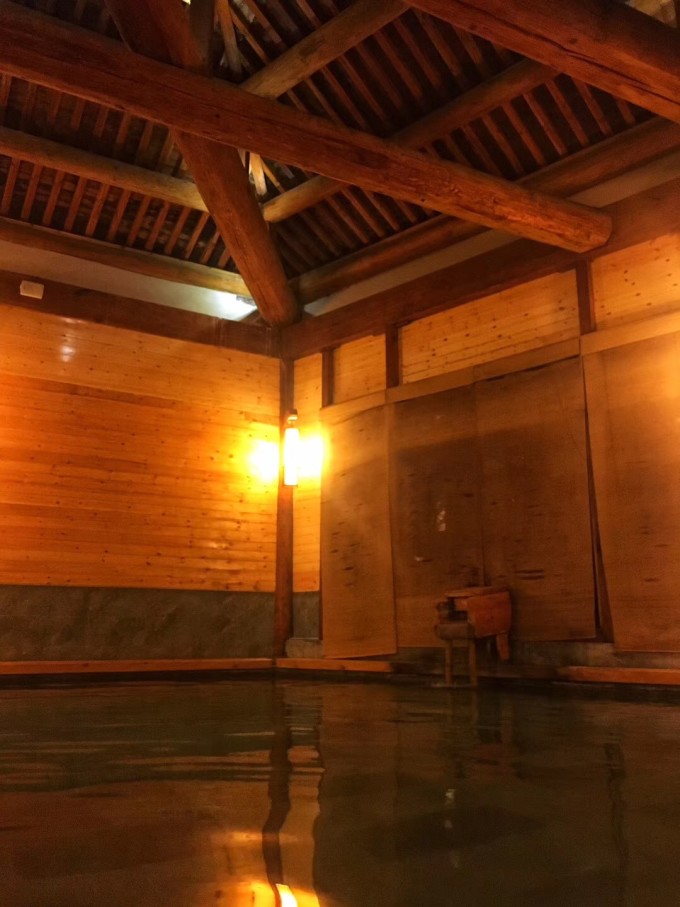 ↑古北水鎮 Day 5 中國美術館The National Art Museum of China (NAMOC) is the only national art museum of plastic arts in China. Starting to be built in 1958, NAMOC, with its title board inscribed by Chairman Mao Zedong, was formally open to the public in 1963. NAMOC is a national cultural landmark after foundation of the People's Republic of China. The main building, roofed with yellow glazed tiles and surrounded by corridors and pavilions, features the styles of ancient Chinese attics and traditional architecture. The building, with 21 exhibition halls in its 6 stories, covers an area of more than 18,000 square meters. The museum boasts an exhibition area of 6,660 square meters. There are a sculpture park covering an area of 3,000 square meters and a modern collection storeroom founded in 1995 covering an area of 4,100 square meters.
↑古北水鎮 Day 5 中國美術館The National Art Museum of China (NAMOC) is the only national art museum of plastic arts in China. Starting to be built in 1958, NAMOC, with its title board inscribed by Chairman Mao Zedong, was formally open to the public in 1963. NAMOC is a national cultural landmark after foundation of the People's Republic of China. The main building, roofed with yellow glazed tiles and surrounded by corridors and pavilions, features the styles of ancient Chinese attics and traditional architecture. The building, with 21 exhibition halls in its 6 stories, covers an area of more than 18,000 square meters. The museum boasts an exhibition area of 6,660 square meters. There are a sculpture park covering an area of 3,000 square meters and a modern collection storeroom founded in 1995 covering an area of 4,100 square meters.
中國 美術館(NAMOC)是 中國 唯一的國家造型藝術博物館。1958年開工建設,1963年正式對外開放。NAMOC是中華人民 共和 國成立後的國家文化地標。主樓以黃色琉璃瓦為頂,周圍有走廊和亭台樓閣,具有 中國 古代閣樓和傳統建築風格。該建築共6層,共有21個展廳,占地面積超過1.8萬平方米。博物館擁有6660平方米的展覽面積。有一個占地3000平方米的雕塑公園和一個占地4100平方米的現代收藏儲藏室。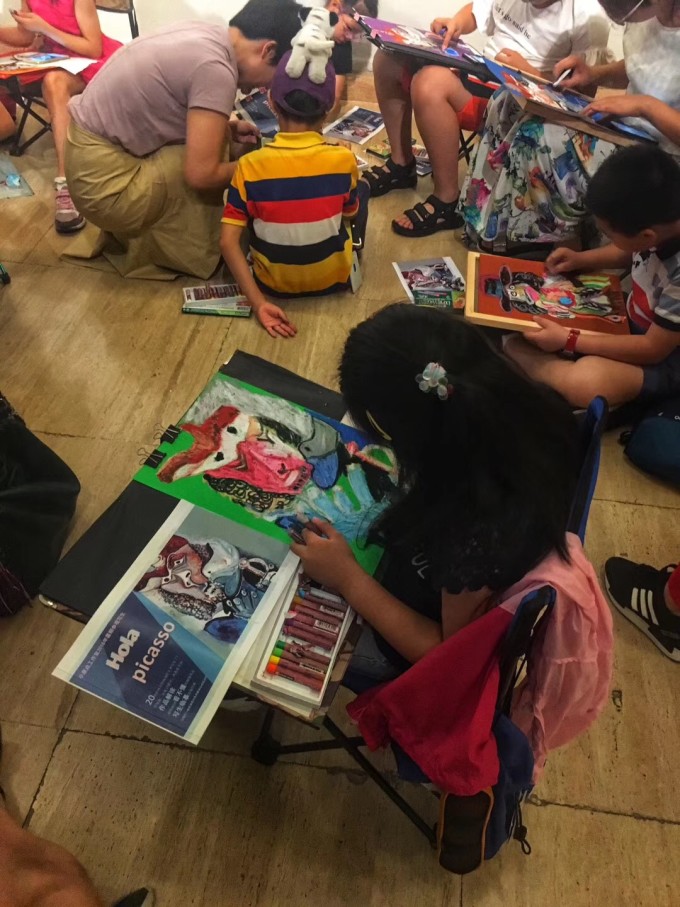 美術館頂層6層是美術館精品,燈光和背景配色都很美,空間很小,但是很安靜。比起樓下的空間,非常喜歡6層。另外,提前一天預約最好了,不然排隊的景象那是非常的壯觀啊。
美術館頂層6層是美術館精品,燈光和背景配色都很美,空間很小,但是很安靜。比起樓下的空間,非常喜歡6層。另外,提前一天預約最好了,不然排隊的景象那是非常的壯觀啊。 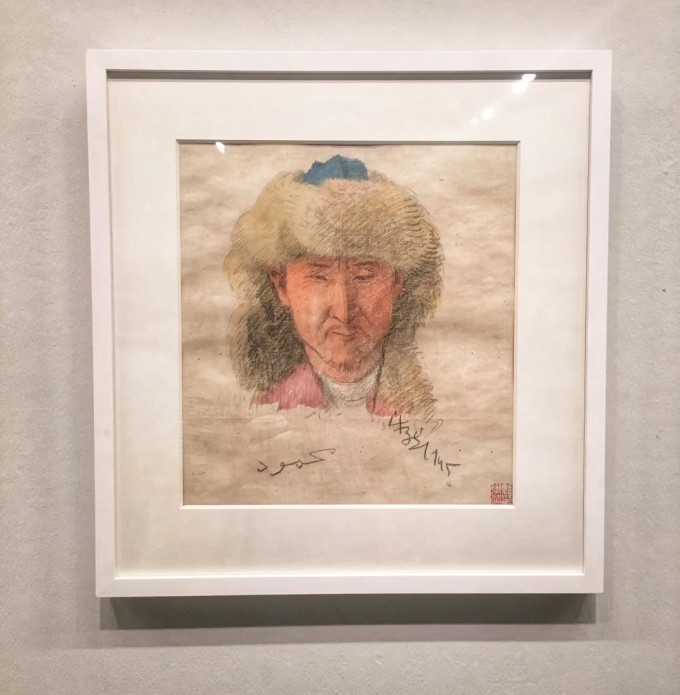
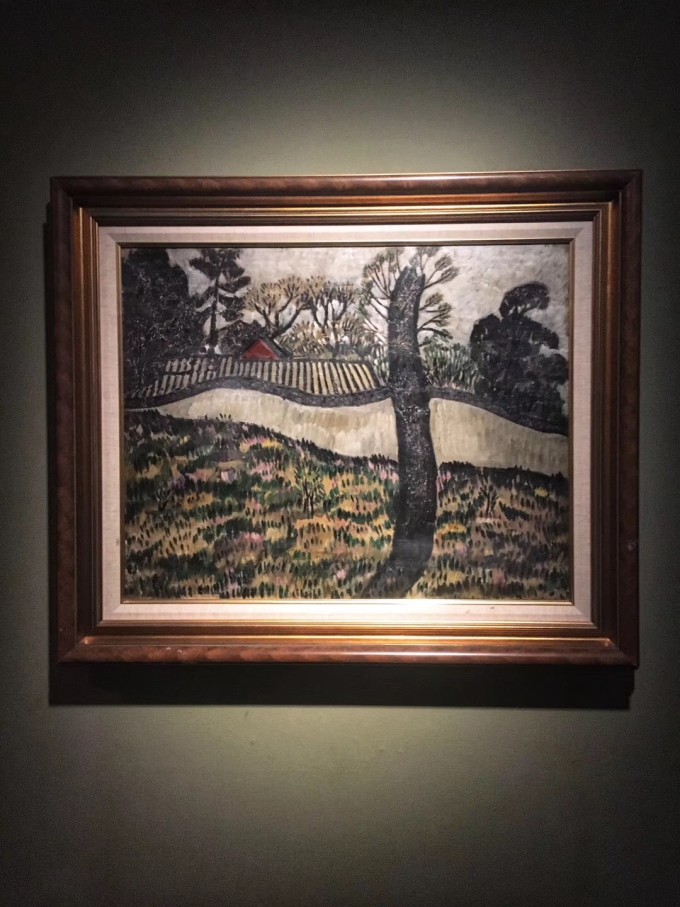

6天計劃 6 Days Plan:Day 1 天安門 Tiananmen 故宮 Forbidden City 梅蘭芳大劇院 Chinese Opera
Day 2 國家博物館 National Museum of China
Day 3 金山 嶺長城 Jinshanling Great Wall
Day 4 古北水鎮 W-Town
Day 5 中國 美術館 The National Art Museum of China
Day 6 雍和宮 Yonghe Temple 中國 中醫葯大學博物館 Beijing University of Chinese Medicine Museum
Day 1:天安門;故宮;京劇因為限號,打車到了天安門東,從天安門東邊過安檢通過天安門走進故宮。
因為是第一個景點,所以關於天安門的英文介紹,我背的特別熟,以前多次游覽天安門,多次路過天安門,倒是從來沒有研究過,拖了這次游玩的福。
TIan’anmen Square is located in the center of Beijing. It was the main gate of he Imperial City during the Ming and Qing dynastics. Tian'anmen Square used to be a closed "T" shape square. 1949, October 1st, Chairman Mao proclaimed the founding of the People's Republic of China and raised the first 5-star red flag.
天安門位於 北京 正中心,這裡在明清兩代曾經是皇城的大門。天安門曾是T字形廣場。1949年10月1日,毛主席在此宣佈了中華人民 共和 國的成立並升起了第一個五星紅旗。
Tian'anmen or the gate of Heavenly Peace is a symbol of new China. During the early Ming Dynasty, the gate was burned down in 1457 and rebuilt in 1465. At the end of the Ming Dynasty in 1644, it was seriously damaged again in a war. Rebuilt second time in 1651.
天安門作為一個承天恩得平安的寓意早已經是新 中國 的象徵了,在明朝初期,天安門曾經在1457年被燒毀,於1465年重建。在明朝後期1644年,又一次因為戰爭而受到嚴重破壞。1651年第二次重建。
The nine-room-wide and five-room-long gate tower was made to show the highest status of the emperor. In the old time, the number "9" was a symbol of the power of the emperor. So the number of 9 was widely used in Tian'anmen gate. For example, the tower is 9-room wide; nine animal figures stand on each corner of the roof; the number of windows and doors are multiples of nine; and each door has 81 knobs.
九個房間的寬度和5個房間的長度的顯示了皇權的威嚴。在古代,數字9代表了皇權。所以這個數字被廣泛的應用在天安門的建造中。例如,天安門9個房間的寬度,在房頂的每個角落有9個神獸;窗戶和門的個數都是9的倍數;每個大門上有81顆金豆豆。
During the Ming and Qing dynasties, the emperors, ministers, and soldiers would go through the gate to worship at the Temple of Heaven, the Temple of Earth, and the Temple of God of Agriculture or go to the war.
明清時期,皇帝、大臣、士兵都要通過天安門到天壇、地壇、農神廟去朝拜,或者是要去打仗。
The River in front of Tian'anmen is called the Outer Golden River. There are 7 stone bridges span over the Golden River, known as the Outer Golden Water River Brideges. According to the historical records, the stone bridges have different names. During the Ming and Qing dynasties the middle one was for the emperors only, so it was called Bridge of Imperial Way. The two bridges on tach side of the middle one were used by the royal family members, thus were called Royal Bridges. The two Bridges farther out were called Ranking Bridges for the civil and military officials above the 3rd rank. the outmost two bridges were called Public Bridges which were used for the 4th rank and the lower officials.
天安門前的那條河叫外金河。金河上有7座石橋,素有“外金水河”之稱。根據史料記載,石橋有不同的名字。在明清時期,中間的這座橋僅供皇帝使用,因此被稱為“御路橋”。中間橋外側的兩座橋是皇室成員使用的,因此被稱為“皇家橋”。更遠處的兩座橋梁被稱為三級以上的軍政官員的“品級橋”。最外面的兩座橋被稱為“公生橋”,用於第四等級和下級官員。
The two pairs of stone lions by the Gate of Tian'anmen served as guardians in the old days. They were sculptured during the Ming Dynasty. The stone lion on the east playing with a ball is a male lion while the other one is a female lion which is playing with a cub. In the old times, lions were thought to be good doorkeepers and so were placed at the gate to ward off evil spirts.
天安門門旁的兩對石 獅子 ,在舊時是守護神。它們是明朝時期雕刻的。東邊的 石獅 是一隻雄性 獅子 ,另一隻是一隻雌性 獅子 ,正在和一隻幼獅玩耍。在古時候,人們認為 獅子 是很好的看門人,所以人們把它放在門口來防止邪惡的幽靈。


故宮又稱紫禁城,位於 北京 的中心。有24位皇帝在這裡生活了491年。其中14位是明朝皇帝,10位是清朝皇帝。紫禁城的建造開始於1406年,完成於1420年的明朝。
Along the central axis there are mainly 6 buildings, the Meridian Gate, the Gate of Supreme Harmony, the Hall of Supreme Harmony, the Hall of Middle Harmony, the Hall of Preserving Harmony, the big stone ramp carved with cloud and dragon designs, the Gate of Heavenly Purity, the palace of Heavenly Purity, the Palace of Union and Peace, the Palace of Earthly Tranqulity, the Imperial Garden and Shenwu Gate.
沿中心軸主要有6建築等。午門、 太和 殿、中和殿、保和殿、 雲龍 石雕、乾清宮、交泰殿、坤寧宮和御花園,和神武門。

在明清時期,午門是宣佈農曆新年和“接受戰俘”儀式舉行的地方。

乾清宮。這是後宮三座最大的建築。它始建於1420年,現在的在1797年重建。在明清初期,它是皇帝虱子和處理日常事務的居所。但在清代第三代雍正皇帝之後,由於他把自己的住處搬到了養心殿,這座建築就被用作了一個“聽眾席”。


Wu Zetian was born of a royal lineage during the Tang Dynasty. She entered Emperor Taizong's harem when she was 13 and that of the successive emperor Gaozong after. A master of manipulation, Wu Zetian persuaded the emperor to declare her one rank below the empress consort. Eventually, the Emperor married Wu. When Gaozong suffered a stroke five years later, Wu governed behind the scenes. She created a secret police force to spy on her opposition, jailing or killing those who stood in her way.
武則天出生於唐朝的一個皇室家族。13歲時,她進入了唐太宗的後宮,之後又進入了高宗的後宮。武則天是一個善於操縱的人,他說服皇帝宣佈她的地位低於皇后。最後,皇帝娶了吳。五年後,高宗中風,武則天在幕後指揮。她建立了一支秘密警察部隊來監視她的反對派,關押或殺害那些阻擋她的人。
After Gaozong's death she reigned through puppet emperors, her sons Zhongzong and Ruizong. She finally proclaimed herself Emperor, the first woman to do so. Wu ruled until her 80s when she was unable to thwart a coup. She died shortly after. Despite her ruthless climb to power, her rule was benign. Wu reduced the size of the standing army, and replaced aristocrats in the government with scholars. She was fair to the peasantry, lowering taxes, raising agricultural production, and strengthening public works. Wu also campaigned to elevate the status of women and had scholars write biographies of famous women.
高宗死後,她通過傀儡皇帝、兒子宗宗和瑞宗統治。她終於宣佈自己為皇帝,這是第一位這樣做的女性。一直統治到80年代,當時她無法阻止政變。她死後不久。儘管她無情地攀爬權力,但她的統治是溫和的。武則天縮小了常備軍的規模,用文人取代了官府中的貴族。她對農民公平,降低稅收,提高農業生產,加強公共工程。武則天還致力於提升女性的地位,並讓學者為著名女性撰寫傳記。


中國 國家博物館的前身可追溯至1912年成立的國立歷史博物館籌備處,至今已走過一百多年的光輝歷程,積澱了深厚的歷史文化底蘊,在文物收藏保護、陳列展覽、社會教育、科學研究、對外歷史文化交流方面發揮著重要的平臺作用,2003年 中國 歷史博物館和 中國 革命博物館合併組建成為 中國 國家博物館。近20萬平方米的建築面積,使它成為世界上單體建築面積最大的博物館;48個展廳展出的“古代 中國 ”和“復興之路”兩個基本陳列以及青銅器、佛造像、錢幣、瓷器、石刻、革命文物、現當代美術作品等十多個專題展覽,使它成為能夠全面系統完整展現中華優秀傳統文化、革命文化和社會主義先進文化的綜合性博物館;配合每年50餘個高水平國際交流展和臨時展覽, 中國 國家博物館每年吸引著近千萬國內外觀眾前來參觀,使它成為世界上最受歡迎的博物館之一。
As the ancestral temple and ancestral temple of Chinese culture, the national museum of China is the highest national historic cultural and art palace that focuses on the outstanding traditional Chinese culture, revolutionary culture and advanced socialist culture. The collection of over 1.4 million pieces here has fully demonstrated and witnessed China's 5000-year civilization.
The national museum of China was established in 1912, the predecessor can be traced back to the national museum of history of Taiwan, has passed one hundred years of glorious history, the deep accumulation of historical culture, the protection of cultural relics collection, display and social education, scientific research, foreign historical and cultural exchanges play an important role in the platform, in 2003, the museum of Chinese history and the museum of Chinese revolution formed as the national museum of China. The building area of nearly 200,000 square meters makes it the largest single building area in the world. 48 exhibition of "ancient Chinese" and "renewal" are two basic display and bronze ware, Buddha statues, COINS, porcelain, stone carving, revolutionary cultural relics, modern and contemporary art works, such as more than a dozen special exhibition, making it able to complete system show complete Chinese excellent traditional culture, the revolutionary culture and socialist advanced culture comprehensive museum; With more than 50 high-level international exhibitions and temporary exhibitions every year, the national museum of China attracts thousands of visitors from home and abroad every year, making it one of the most popular museums in the world。-----------摘自國博官網




長城始建於公元前7世紀。在歷史上,我們把這段時期稱為春秋時期(公元前770年)公元前-476年)。當時, 中國 有很多王國,他們經常為了擴大自己的領土而互相爭鬥。在戰爭期間,為了保護自己免受攻擊,他們沿著邊界修建了高牆、烽火臺和防禦堡壘.




古北水鎮 位於 北京 市 密雲 區古北口鎮,坐落在司馬台長城腳下。古北口自古以雄險著稱,有著優越的軍事地理位置,《 密雲 縣誌》上描述古北口“京師北控邊塞,順天所屬以松亭、古北口、居庸三關為總要,而古北為尤沖”。古北口以其獨特的軍事文化吸引了無數文人雅士,蘇轍、劉敞、納蘭性德等文詞大家在此留下了許多名文佳句,更有康熙、乾隆皇帝多次贊頌,以“地扼襟喉趨溯漠,天留鎖鑰枕雄關”來稱頌它地勢的險峻與重要。
Wtown is located in gubeikou town, miyun district, Beijing, at the foot of the Great Wall of simatai. Ancient gubeikou is famous for its magnificence and danger since ancient times, and it has a superior military geographical position. Miyun county annals describes gubeikou as "the beijing-controlled frontier fortress controlled by the capital, and the subordinate of shuntian is songting, gubeikou and juyong three pass, while the ancient north is you chong". Gubeikou attracted numerous literati and refined scholars with its unique military culture. Many literary words such as su zhe, liu chang and nalan xingde were left here, and emperors kangxi and qianlong praised it for many times, and praised its precipitous and important terrain with "the ground is dominated by the throat, the desert is followed by the sky.(這英文翻譯的古詩部分嗲不嗲,哈哈哈。。。)
從 金山 嶺開車去 古北水鎮 ,因為提前訂好了在 古北水鎮 裡面的酒店,還特別有景區人員打來電話確認預計抵達時間,並指引我們如何停車,如何從停車場搭電瓶車到景區入住辦理,再我們寄存行李,不到一個小時,行李已經送到我們各自的酒店里了,我住在日式風格的湯泉小旅館段家大院,價格是1060/晚, 朋友住在八旗客棧。我們是游覽完長城在長城停車場對面吃了農家樂之後開車到的3號停車場,抵達辦理好以後,我們搭乘電瓶車到最後一站,步行到酒店。稍作休息後就乘船到了水鎮中心位置,從中心步行到酒店位置旁邊的夜爬長城纜車口。




1987年司馬台長城被列入世界遺產名錄,是我國唯一保留明代原貌的古建築遺址,被聯合國教科文組織確定為“原始長城”。 中國 著名長城專家羅哲文教授評價其為“ 中國 長城是世界之最,而司馬台長城是 中國 長城之最”。 2012年,司馬台長城被 英國 泰晤士 報評為“全球不容錯過的25處風景之首”。
2010年開始,在總裁陳向宏先生的帶領下,一批“古北人”不畏艱難險阻、繼往開來,接過守護長城的重任。在原有長城的基礎上進行保護,引進 法國 波 馬公 司最新技術設計的單線循環脫掛抱索器索道,游客可輕鬆登覽、領略司馬台長城的壯美。
In the second year of longqing, in order to strengthen the northern military defense, muzong zhujiahe appointed qi jiguang to build the Great Wall of simatai for the general of chizhen town. Add to build the wall, pier and other facilities against the enemy on the original basis, highlight the momentum of the pass. Until the battle of gubeikou in 1933, the Great Wall of sima tai came under fire, and the broken walls became more and more vigorous.
In 1987, the simatai Great Wall was listed in the world heritage list. It is the only ancient architectural site in China that retains the original appearance of the Ming dynasty. "The Great Wall of China is the largest in the world, and the Great Wall of sima tai is the largest in China," said professor luo zhewen, a famous expert on the Great Wall of China. In 2012, sima tai wall was named "the top 25 must-see scenic spots in the world" by the British times.
Since 2010, under the leadership of President Chen xianghong, a group of "gubei people" have continued to protect the Great Wall despite difficulties and difficulties. On the basis of the original Great Wall for protection, the introduction of the latest technical design of the French company boma single-line cycle unhanging of the rope hoisting device cable road, visitors can easily access the magnificent view of sima tai Great Wall.





中國 美術館(NAMOC)是 中國 唯一的國家造型藝術博物館。1958年開工建設,1963年正式對外開放。NAMOC是中華人民 共和 國成立後的國家文化地標。主樓以黃色琉璃瓦為頂,周圍有走廊和亭台樓閣,具有 中國 古代閣樓和傳統建築風格。該建築共6層,共有21個展廳,占地面積超過1.8萬平方米。博物館擁有6660平方米的展覽面積。有一個占地3000平方米的雕塑公園和一個占地4100平方米的現代收藏儲藏室。





